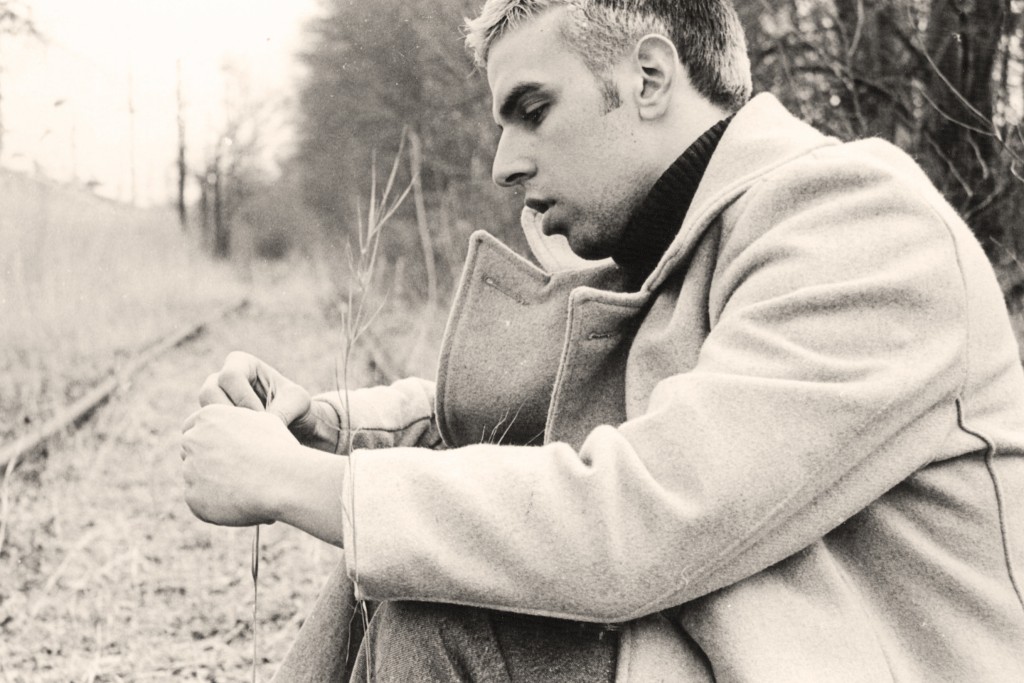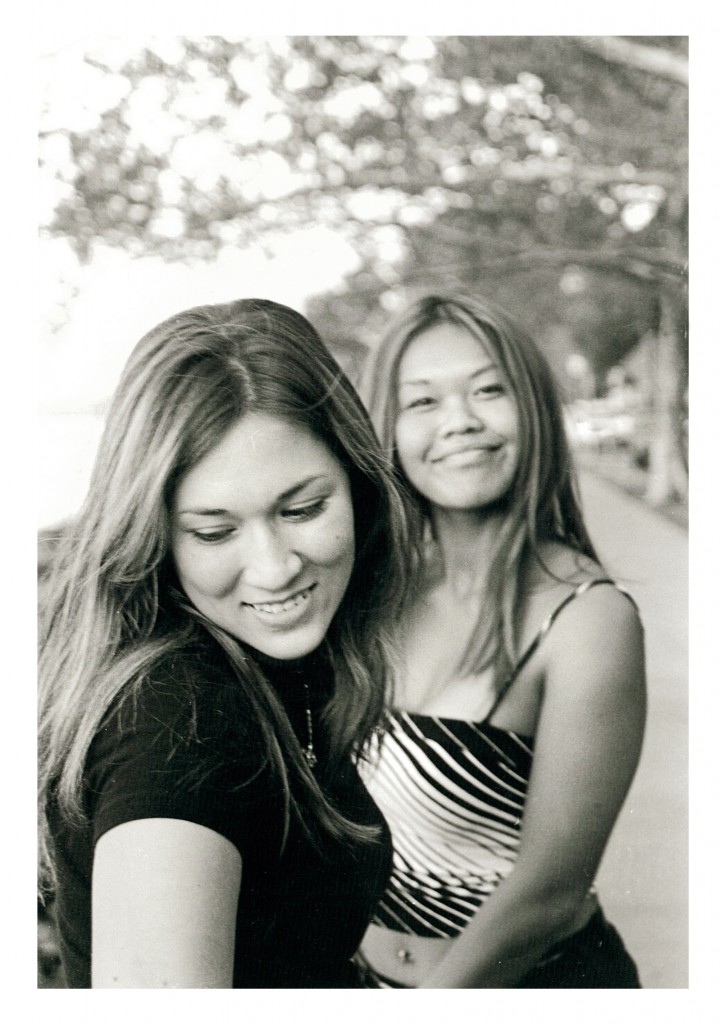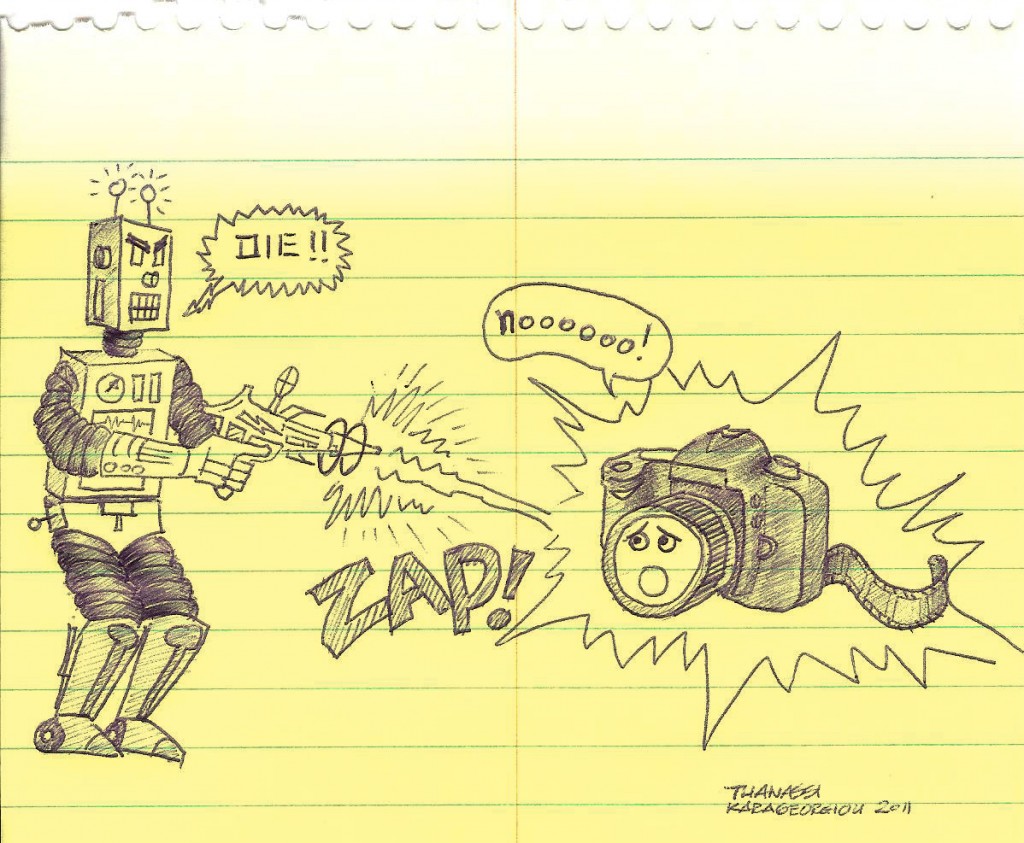Technology has brought tremendous advancements in the production of art and media throughout the years, but the most hyperbolic changes have taken place in the last ten. I want to share with you, my personal views and experiences in the realms of photography, music and motion pictures. In this segment, I’ll discuss picture taking.
There are many photography purists out there that look upon the digital revolution with contempt. They argue that film produced better pictures with more “soul” and other silly metaphors. They are mostly people in their 40s and above who become increasingly resistant to change. They are also angry that the same photographic process that took them a week can now be done in a day. Bah humbug! Photoshop? Lightroom? Aperture? They don’t want to learn all this new software. They just want to sit in the darkroom all day while sipping on grasshoppers and listening to Bing Crosby. While its wrong to simply dismiss digital photography altogether because it’s soul-less or whatever, there is something to be said about the aesthetic and sentimental quality of the photograph from the days of film.
Ten years ago, long before I ever got my first compact digital camera, I used a Pentax ZX-10 35mm SLR. I shot extensively with Tri-X 400 Black & White film. I developed my own negatives and then sat in a dark room for hours to print 8x10s on fiber and resin coated Illford paper. It was a lot of fun, and I payed my dues by learning the fundamental principles of photography. Long before that, I would borrow my dad’s Kodak Ektralite 10 camera that shot 110 film. This smaller sized film came in a cartridge and was notorious for grainy and blurry prints, but its all we had and I liked the pictures it made. I loved going to the mom-and-pop photo stores. They all had that distinct chemical smell and grey office carpeting. When we shot film, we were limited to 24 or 26 exposures per roll. Every shot had to count. The film, as well as the development process was expensive, so people were even less inclined to shoot. This made every picture that came back from the photo store special. The 1-hour photo business model wasn’t as wide-spread as it is today, so many of us would wait days for our prints. All that waiting made the pictures even more special when we got them. Even the under/over exposed and out of focus pictures were cherished. They were stuck on refrigerators, put in albums and flipped through for years, arousing warm fuzzy feelings of nostalgia.

Today’s albums are Facebook, Flickr, etc. and hardly anyone prints anymore. Sharing is carried out through posting, tagging and email. With the advent of the internet and the digital camera, the overall cost of casual photography has declined so much that it doesn’t matter how many shots are taken. From a photographer’s perspective, If you don’t like a shot, just delete it-in a digital album, or right on the camera before it’s even uploaded. If your mom blinked in the first picture, take another. From the consumer’s perspective, there are dozens of photo sharing sites accessible with the click of a mouse or the swipe of a smart-phone. Aunt Harriet in Oregon can check out your new pictures minutes after they were taken. Is she getting tired of the same ten pictures you send her every day of your new baby? I don’t know, but I would.

All the advancements in technology have done wonders to bring the art of photography to socioeconomic groups that once thought it inaccessible. The instant zipping of photos across oceans and time zones is also great, but it takes away from that “special” feeling we got in the mom-and-pop photo store years ago. The celebration of the photograph is no longer as we knew it. There is now far less emphasis placed on individual pictures as more attention is payed to the swelling albums and online collections that often sacrifice quality for quantity. I believe that new photographers have a great learning tool in the digital camera, where results of settings and experimentation can be seen immediately. The learning process can be greatly accelerated, but the appreciation of well-made photographs is something that requires a critical development. This stage can be infinitely more difficult in a time where we’re bombarded with the techniques and tastes of hundreds of sub-genres in photography. How does one critique HDR photography in contrast with macro photography, or wedding photography, or street photography, or any combination thereof? How does a new photographer decide which field they’re most interested in when they all seem so appealing? Indeed, being a photographer is a difficult and competitive task in the digital era. We’re given so many tools and opportunities, that we sometimes don’t know what do do with all of them.


N: Nope, technology has not killed highly consumed art. Straight up. Thanks for the Facebook note.
Btw, don’t give up on printing. The printed image is still a wonder of beauty.
Oh not at all. I’ve been printing like a madman lately!